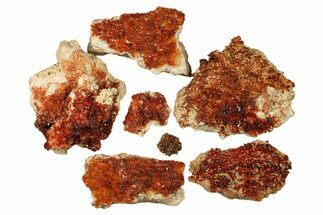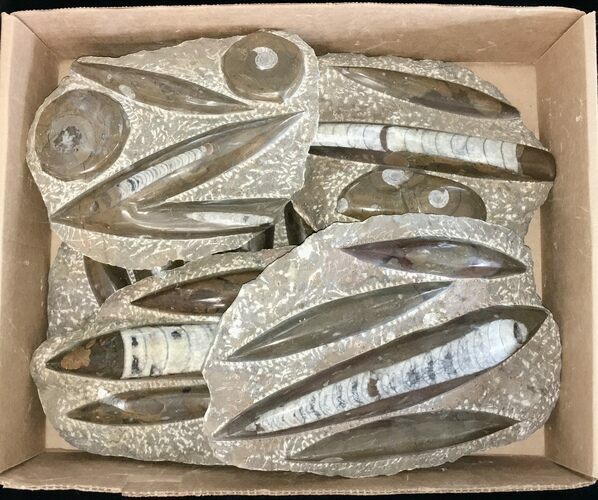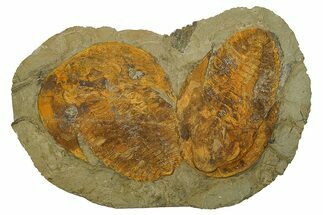This Specimen has been sold.
Clearance Lot: Fossil Orthoceras & Goniatite Plates - 8 Pieces
This is a wholesale lot of 8 Orthoceras and Goniatite fossils from Morocco. Each specimen has polished sections that reveal Orthoceras and/or Goniatite fossils, and in some specimens, the colorful rock. Each plate is quite large, with the smallest measuring 6.8" wide and the largest at 10.3" wide.
These are perfect as gifts or for resale.
These are perfect as gifts or for resale.
The fossils commonly known as Orthoceras are extinct "straight" cephalopods that lived during the Upper Devonian period around 370 million years ago. Like other cephalopods, they lived inside of their shells, had tentacles they could use to grab food, and used jet propulsion, squirting water to move. The rock containing them is quarried from the Atlas Mountains of Morocco and frequently polished to reveal the fossils and make decorative items with them.
While Orthoceras is the common name for these cephalopods, there are actually several different genera, including Michelinoceras and Arionoceras, found in association. However, unless you are one of the world's leading experts on fossil cephalopods, you probably won't be able to tell them apart.
While Orthoceras is the common name for these cephalopods, there are actually several different genera, including Michelinoceras and Arionoceras, found in association. However, unless you are one of the world's leading experts on fossil cephalopods, you probably won't be able to tell them apart.
Goniatites possessed a shell divided internally into chambers filled with gas for buoyancy. An open chamber at the front of the shell provided living space for the animal. The general morphology and habit of goniatites was probably similar to that of their later relatives the ammonites: they swam freely and possessed heads with two well developed eyes and arms.
SPECIES
Orthoceras sp. & Goniatites sp.
LOCATION
Anti-Atlas Mountains, Morocco
SIZE
Range between 6.8 - 10.3" long
CATEGORY
ITEM
#215294
We guarantee the authenticity of all of our specimens.
 Reviews
Reviews











